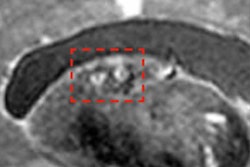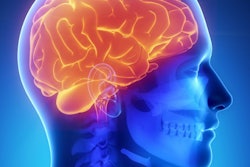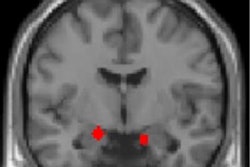
Could it simply be déjà vu all over again? In a study published online September 19 in Neuron, European researchers used 7-tesla functional MRI (fMRI) scans and artificial intelligence (AI) to determine how the brain connects with a person's memory and past experiences to solve daily problems.
Results indicate that the hippocampus unlocks the past by retrieving and sending on memories -- while also recirculating that initial activity back into the hippocampus, triggering the retrieval of other related memories. Ultimately, those recollections help us navigate our daily routines.
"The hippocampus is central for storing distinct episodes, while also supporting integration across related episodes," wrote the researchers led by Raphael Koster, PhD, a research scientist with DeepMind in London, which is owned by Alphabet, the parent company of Google. "Using ultrahigh-resolution fMRI, [we] provide evidence for a core computational principle (big-loop recurrence) that can account for these apparently conflicting hippocampal roles."
The corners of your mind
The hippocampus has long been known to play a primary role in maintaining a person's episodic memory. More recent studies suggest that this region of the brain is also involved in gathering and integrating information from different times and related memories.
"Episodic memories can tell you whether you have met someone before, or where you parked your car," Koster explained in a statement. "The hippocampal system supports this type of memory, which is crucial for rapid learning."
While episodic memory has been studied in the past, current theories do not explain how people can use previous experiences and knowledge to develop current insights. Some researchers have speculated that the hippocampus has the circular ability to gather and reprocess memories for the benefit of present activities.
"Specifically, the hippocampal system is proposed to act as a big-loop recurrent circuit, whereby the output of the system is recirculated as a new input rather than constituting the end point of hippocampal processing," the authors wrote (Neuron, September 19, 2018).
In their study, Koster and colleagues performed 7-tesla fMRI scans on 26 men and women while the subjects completed a unique task requiring them to look at pairs of images. Each initial set contained a generically drawn face and an object or a place. The object or place images were then paired with different faces; as a result, each image pair was linked with another pair through a shared object or place photo.
The researchers then presented the subjects with one face photo and asked them to choose the correct, linked face image from between two others. The goal of the exercise was to assess a person's memory based on whether they could make indirect connections between the image pairs. The process was designed to prompt the hippocampus and related cortical brain regions to retrieve related and multiple linked memories.
"In order to investigate the functional properties of the entorhinal cortical layers, we first needed to establish the presence of detectable scene and object signals in the fMRI data," the authors added.
fMRI, AI in tandem
The specialized fMRI techniques were developed by fellow study authors at Otto von Guericke University in Magdeburg, Germany. Through multivoxel patterns, they separated parts of the entorhinal cortex that provide input to the hippocampus, allowing for the measurement of memory pattern activation in the hippocampus.
The AI algorithm then came into play by measuring and further distinguishing hippocampal activity when subjects viewed faces, scenes, and objects. When the algorithm indicated a subject was reacting to an image set and its contents, that signal was an indication of a retrieved memory and thus a prompt to the hippocampus to gather other related memories -- the big-loop recurrence.
 In the scene-object test, fMR images show memory activation from the posterior medial temporal lobe to the occipital cortex, incorporating both the posterior parahippocampal gyrus and retrosplenial cortex. Images courtesy of Neuron.
In the scene-object test, fMR images show memory activation from the posterior medial temporal lobe to the occipital cortex, incorporating both the posterior parahippocampal gyrus and retrosplenial cortex. Images courtesy of Neuron."Interestingly, the algorithm realized [that] big-loop recurrence has striking parallels with cutting-edge machine-learning neural network architectures that utilize external memory to solve problems of real-world relevance, typically referred to as 'question answering,' " the authors wrote.
So where might these findings lead? The authors believe the results could help AI learn faster in the future.
"While there are many domains where AI is superior, humans still have an advantage when tasks depend on the flexible use of episodic memory," said Martin Chadwick, PhD, a research scientist at DeepMind. "If we can understand the mechanisms that allow people to do this, the hope is that we can replicate them within our AI systems, providing them with a much greater capacity for rapidly solving novel problems."



.fFmgij6Hin.png?auto=compress%2Cformat&fit=crop&h=100&q=70&w=100)




.fFmgij6Hin.png?auto=compress%2Cformat&fit=crop&h=167&q=70&w=250)











